The Plaza de España and Francisco Franco
I love living in Spain for a lot of reasons: siestas, wine, crazy parties, friendly people, the beautiful language. Also, I’m fascinated by history, and Spain is full of it. The Spanish Civil War is of particular interest; the ultimate left-right clash, the workers against the privileged, the cohesion of the Francoists and the suicidal splintering of the liberals, the cowardice of the world’s democracies, the brutality shown by foreign fascist powers, the self-sacrifice of the International Brigades and of course the war’s terrible, soul-crushing end. In this movie, the bad guys won. It’s utterly captivating.

Years later, the wounds haven’t completely healed over; the war was too brutal, and the disastrous reign of Franco too long. In an attempt to finally help Spain reach a sense of closure, the government passed the Historical Memory Law in 2007, officially condemning the Fascist regime. It honors the victims on both sides of the war and grants honorary Spanish citizenship to all members of the International Brigade. But most tangibly, the law mandates the removal of all Francoist symbols and statues from public areas.
It appears that regal, conservative Oviedo didn’t get the memo. In the Plaza de España, one of the country’s last Francoist statues is still standing tall, looking over the Campo de San Francisco. It was erected to commemorate the Caudillo’s death. Franco’s face appears on a medallion on the statue’s base, below an inscription reading “From Oviedo to Francisco Franco”, while above, Hera the Greek Queen of the Gods, presides over the scene. Franco’s face has been the target of paint, graffiti and defamation over the years.
We never heard an official explanation as to why this statue which honors Spain’s most infamous ruler is still standing in the middle of the city. I’m not necessarily an advocate of the forced removal of such monuments, but Oviedo sure seems to be flaunting a national law, despite the pressure of groups dedicated to erasing the lingering memory of Franco.

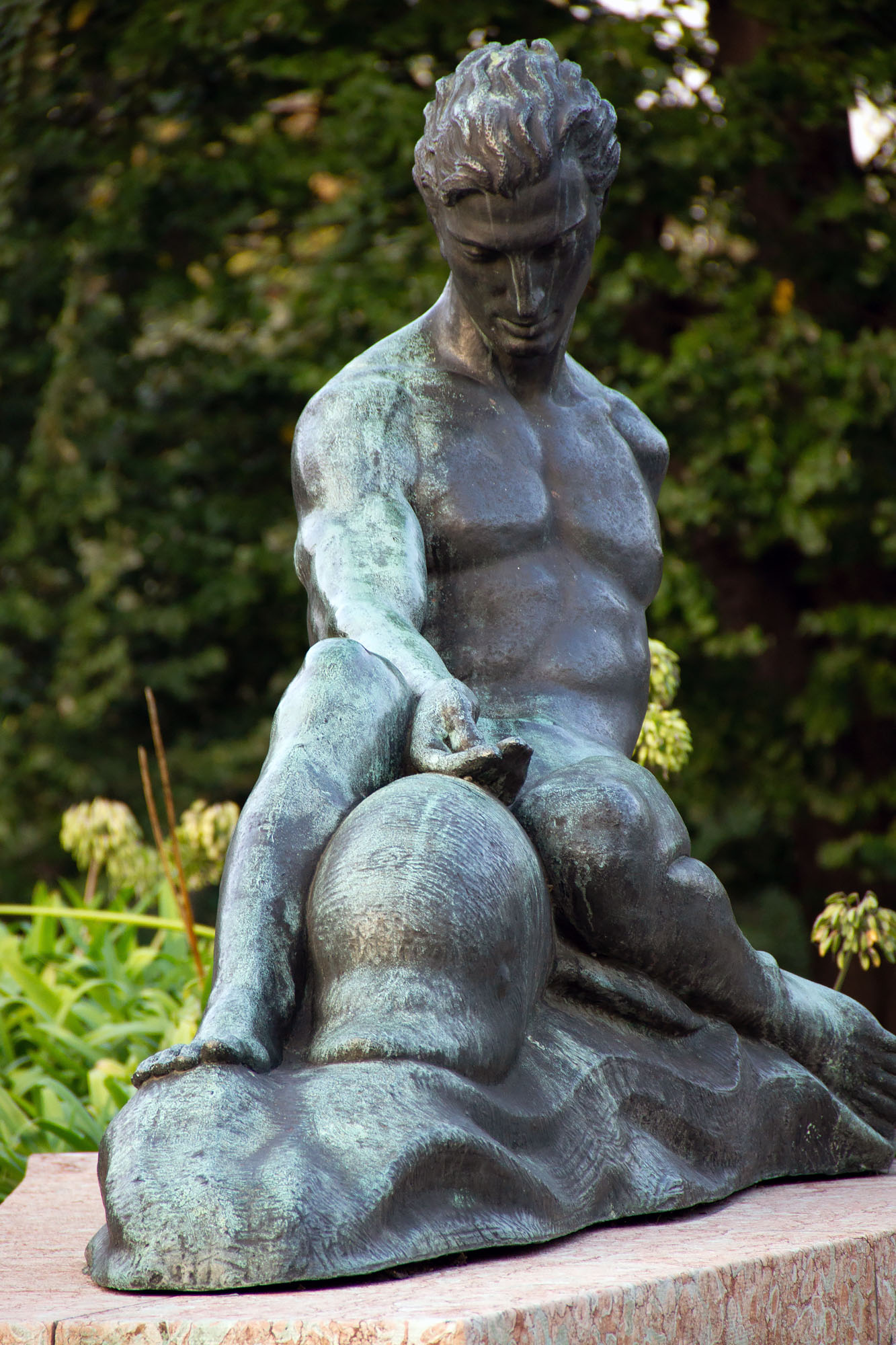
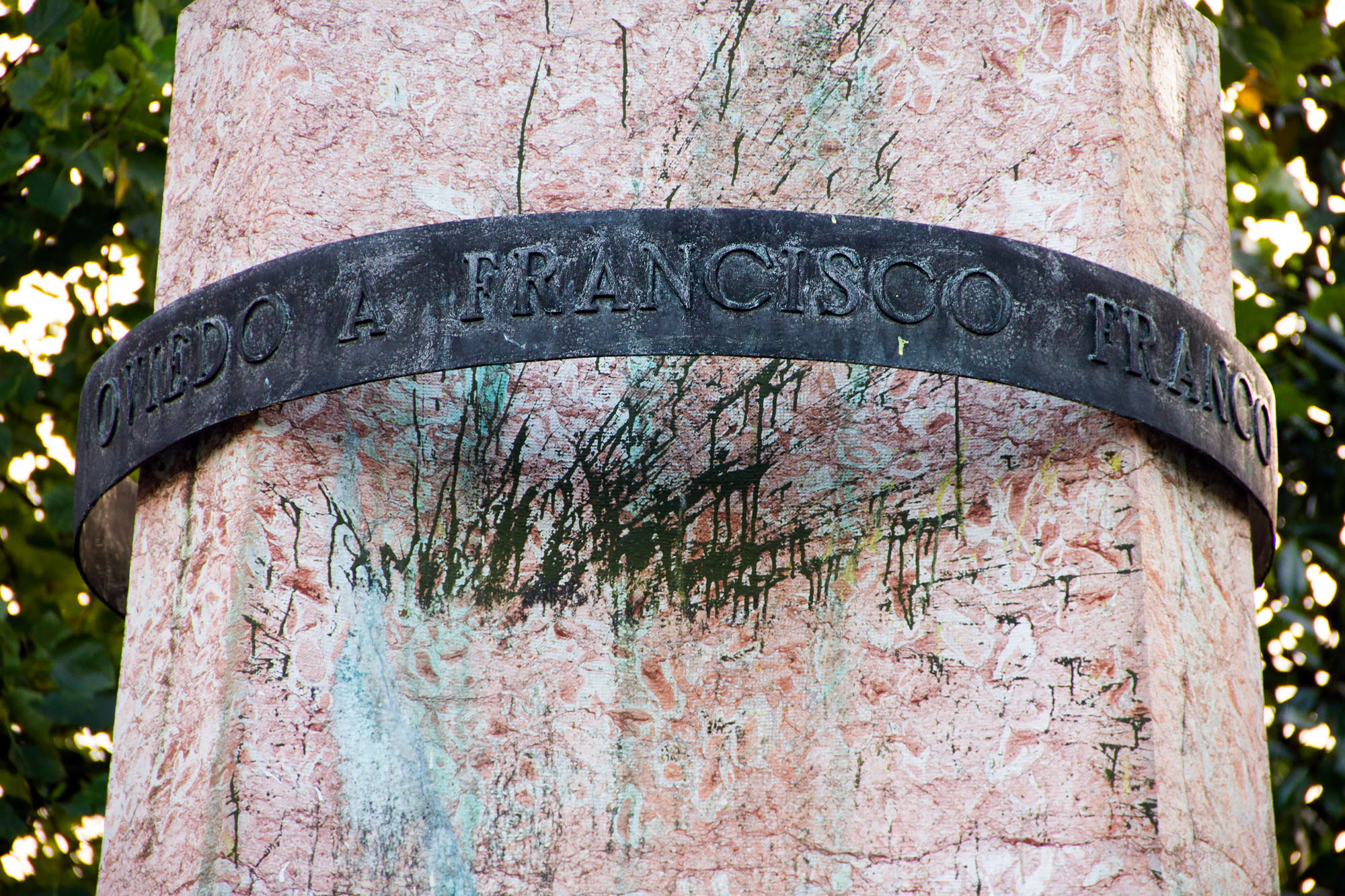
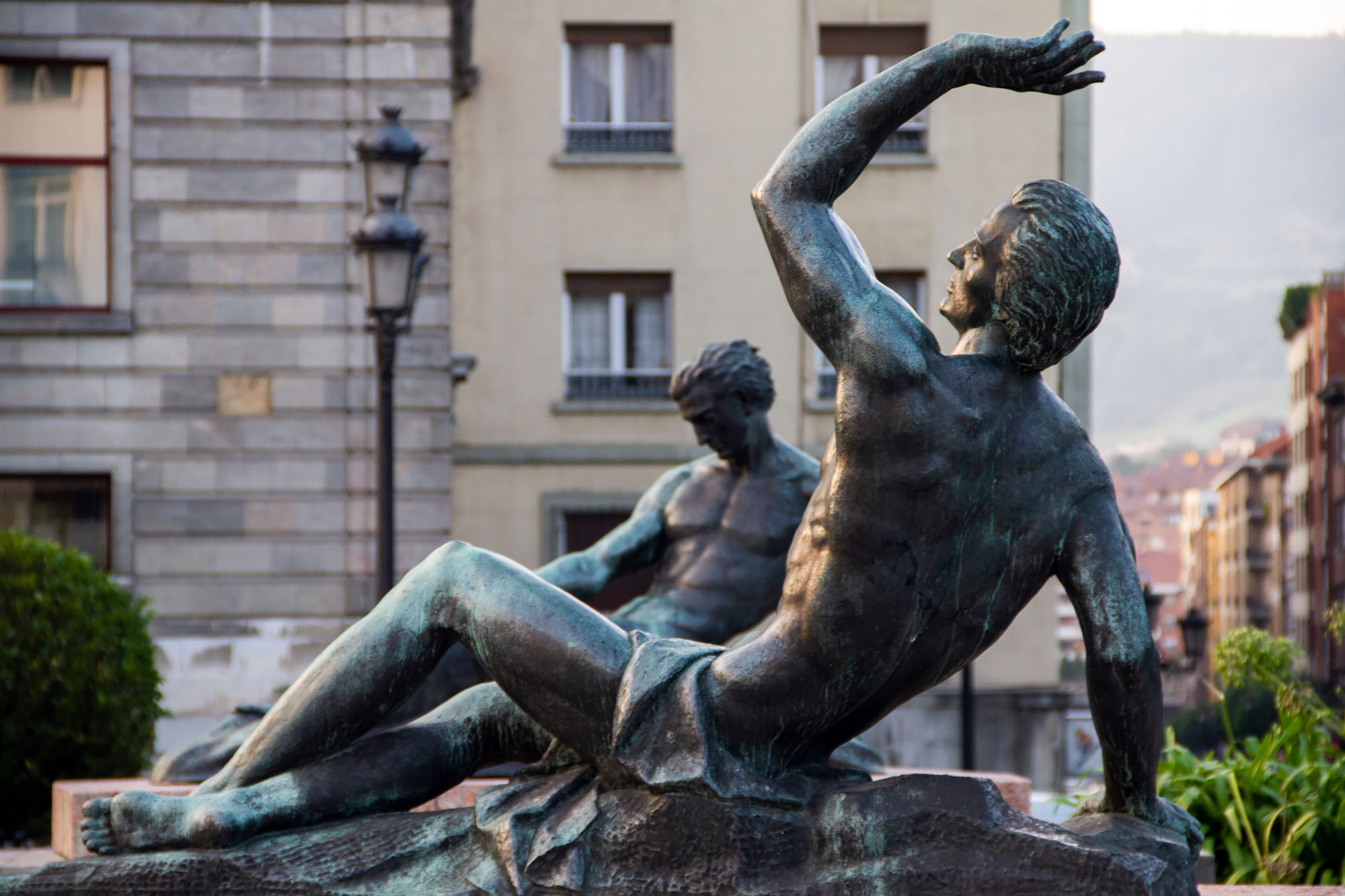
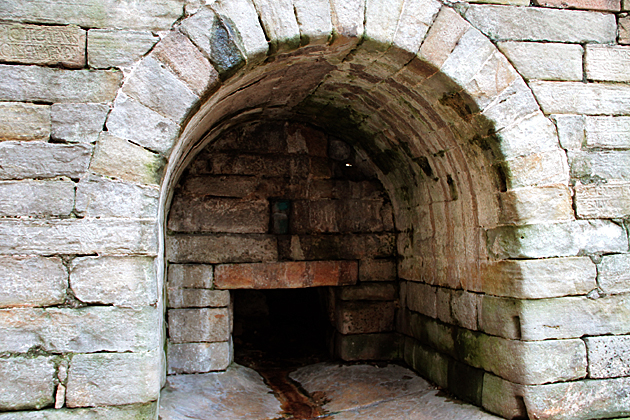
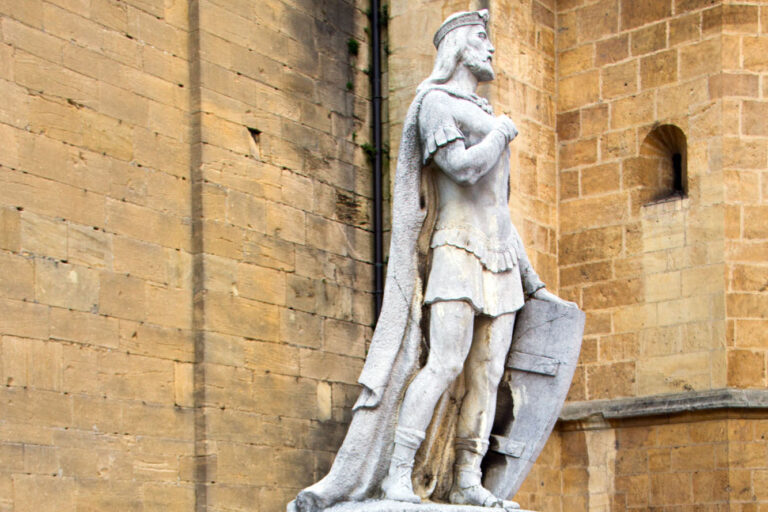
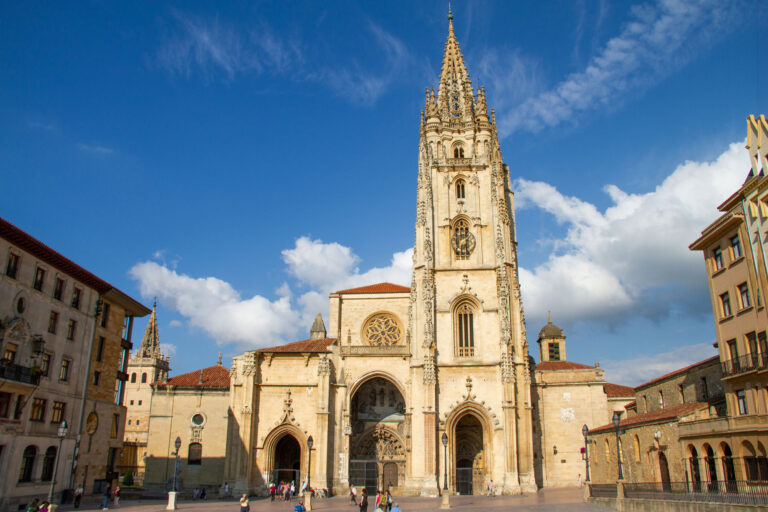

This is a real shame for everybody living here and I can’t believe all that dictatorship symbols haven’t been removed already (even though there’ll be asap).
Btw, lose the stereotypes, Spain is not all about siesta (people work from early in the morning until 9 or 10 pm so no time for “napping”) or parties.
Thanks for commenting, Felix. But, man! In a post which demonstrates understanding of your country’s civil war, and uncovers a dark piece of Oviedo trivia (of which even many ovetenses weren’t aware), I’m criticized for stereotyping Spain because I mentioned that I love siestas? I certainly didn’t say that “Spain is all about siestas”, as you suggest! It’s just a small piece of the culture which I love (along with many other things). Don’t worry — we’re well aware that many, many Spaniards don’t take siestas, especially here in the north (they were more popular in Valencia). Regardless, I take one every single day. I wish we had them in the USA!
I’ve read that Asturias was a stronghold of left-wing workers in the Civil War with Franco that took place in the 1930s. I wonder if the plaque of Franco was a reminder to the Asturians as to the victor of that Civil War. It’s not uncommon for dictators to build reminders to a reluctant populace when the former has won a victory over them. It does seem hard to understand why that plaque would still be in place so many years after Franco’s death, but perhaps a relaxed Spanish “live and let live” attitude might explain it. I really don’t know, but I do know that the information on the 1930s history of the region is correct. I hope this helps!